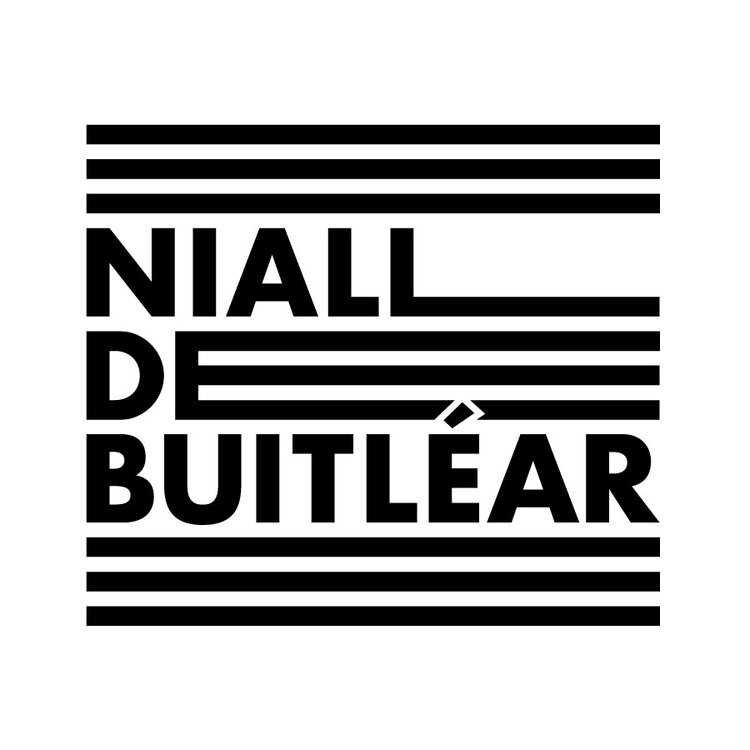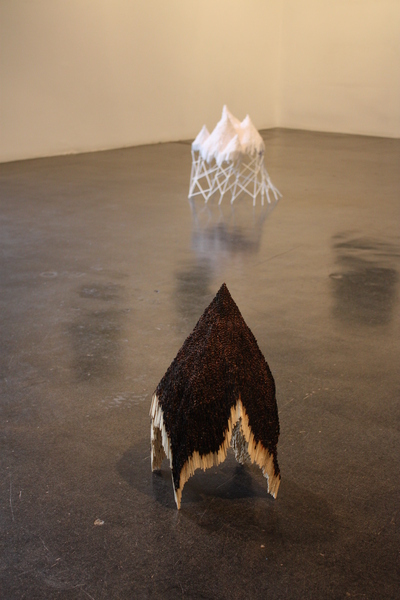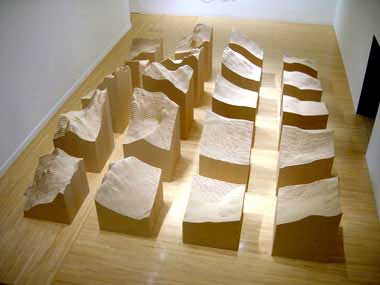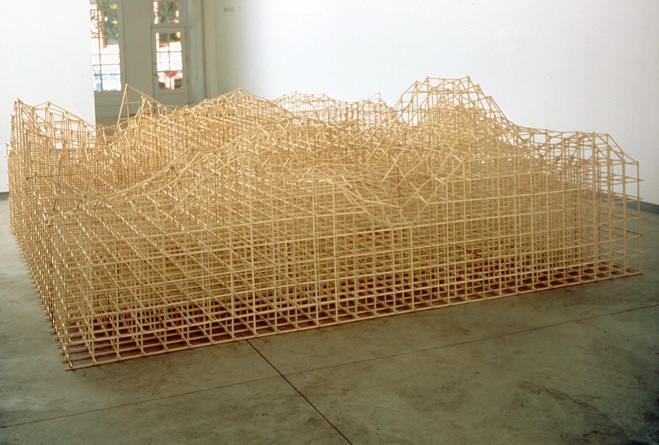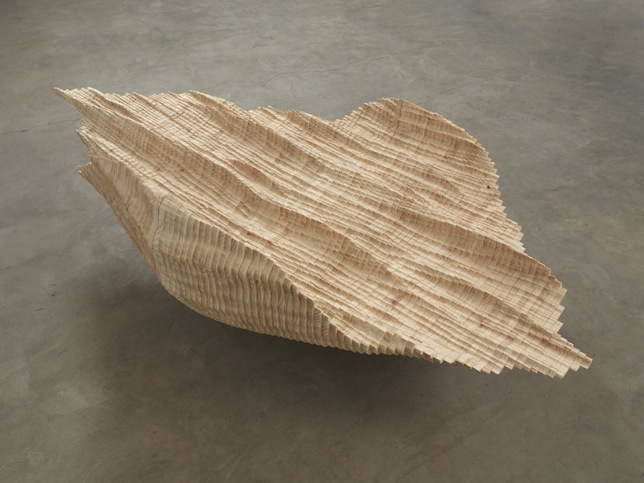The photo I got of the show aren't the best and I don't have a good enough image of the biggest piece I had in the show but I hope to have some better ones in a couple of weeks when the show finishes. The work on the walls is by Debra Bowden - more about the show here
sculpture
Josiah McElheny Presentation at MoMA
Plenty's Boast - Martin Puryear
 Martin Puryear
"Plenty's Boast"
1994-1995
Red cedar and pine, 68 x 83 x 118 inches
Martin Puryear
"Plenty's Boast"
1994-1995
Red cedar and pine, 68 x 83 x 118 inches
A Bad Day For Public Art
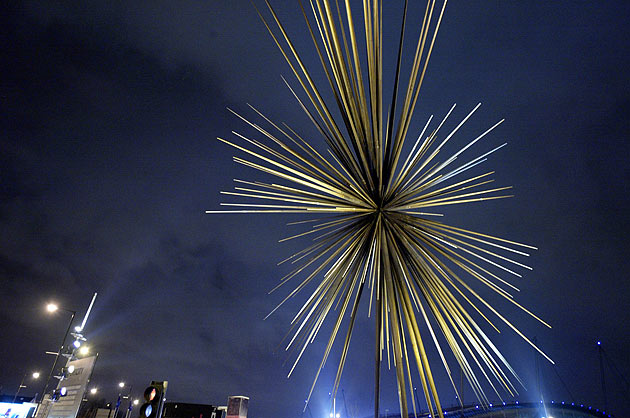
There were two stories in the news today about high profile public sculptures in the UK. It was announced that Mark Wallinger's proposal to build a giant horse in Kent has been selected for the "Angel of the South" project and will be built pending Councillors' approval. My views on his proposal are aired in this earlier post.
It was also announced that the pictured sculpture "B of the Big Bang" by the Thomas Heatherwick Studio in Manchester is to be dismantled. Here is some info from the Guardian:
A week before its unveiling the tip of one of its spikes fell to the ground. In May 2006, nine more spikes were removed for safety tests amid fears that the sculpture, designed by Thomas Heatherwick, might pose a risk to passersby.
In November last year, the Thomas Heatherwick Studio agreed to pay Manchester city council £1.7m in an out-of-court settlement over the safety problems. The council's executive committee decided today that the sculpture should be dismantled, citing "technical problems".
More http://www.guardian.co.uk/artanddesign/2009/feb/11/b-bang-sculpture-manchester
Maya Lin - Systematic Landscapes
Picutred above is Blue Lake Pass a sculpture made of particle board by Maya Lin. It is from her show Systematic Landscapes at the Henry Art Gallery, Seattle.
Images and info here
Marwan Rechmaoui at the Saatchi Gallery
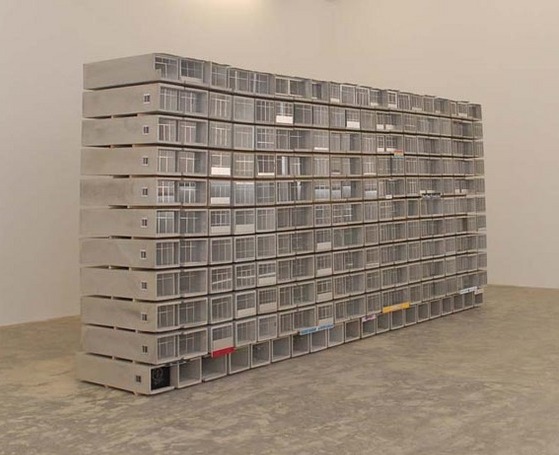
A sculpture by Marwan Rechmaoui in the ehibition of Middle Eastern art at the Saatchi Gallery. The piece is a recreation of the apartment block in Beruit where the artist lived for five years.
Jared Pankin - Wooden Assemblages
New Traditions - Stone Gallery

I'll be exhibiting the wall mounted piece pictured here and a freestanding sculpture in a group show called New Traditions at the Stone Gallery (15 Jan - 14 Feb).
Kendall Buster


Double Chalice (With Chambers Joined and Separated) , 1996, steel, insect screen, wire
I discovered Kendall Buster through a catalogue of work by Tara Donovan
Ben Butler - Wood Sculptor
More work by Ben Butler can be seen on his website.
Sculpture by Urs-P. Twellmann
 Sculpture by Urs-P. Twellmann. More on his website here http://www.twellmann.ch/fs-e/welcome.html
Sculpture by Urs-P. Twellmann. More on his website here http://www.twellmann.ch/fs-e/welcome.html
Chris Dunsheath Sculptures


Here are two sculptures by a British Sculptor named Chris Dunseath. There is more to see on this webiste:
Joe Hogan - Basket Weaving Sculptor
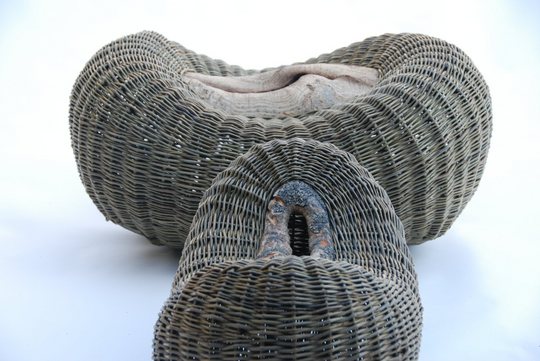
I was in Kilkenny today and saw a great piece of work by Joe Hogan at the National Craft Gallery. He develops basket woven forms around found pieces of wood.
More of her work can be seen on his website here.
"Angel of the South" - Too much money not enough effort
The five proposals for The Ebbsfleet Landmark sculpture (nicknamed "the Angel of the South") have been cut down to three. The remaining proposals are Mark Wallinger's giant horse, Richard Deacon's construction of triangles, and Daniel Burren's tower. The whole commision seems absurd to me the commisioners seem to think they can recreate the success of Antony Gormley's Angel of the North by commisioning an even bigger artwork. They are forcing artists to work on a scale that is completly inappropriate and which, I believe, will result in a terrible piece of sculpture. I think the project will be a failure, the best that can be hoped for is damage limitation. A dry, conceptualist like Daniel Burren was unlikely from the beginning to produce a work that the public would respond to in the way they have The Angel of the North. I am sure his piece will not be built - it's strange that he was even asked to make a proposal.
Richard Deacon is one of the top contemporary sculptors in the world today and he is the only artist on this shortlist who can truthfully be referred to as a sculptor. His proposal for the "Landmark" is far from his best work, though I think it is the best of the five original proposals. I don't think the public would warm to the work and it would probably be ridiculed by as just a pile of sticks.
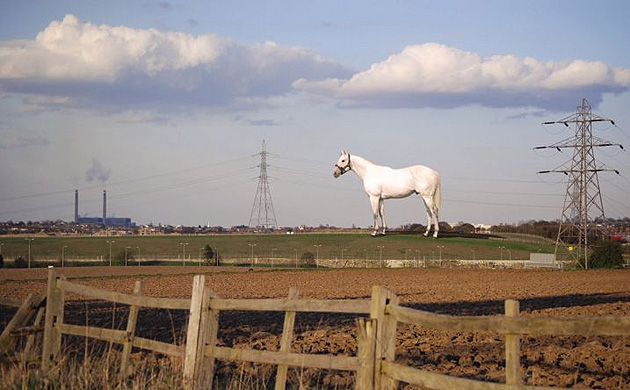
Wallinger has proposed a sculpture of a giant horse. The computer generated visualisation of the piece in situ looks like a photograph of a real horse photoshopped onto the site. The work will be actually be coloured to look exactly like a real horse! This proposal is the only one that I think has the potential to become a landmark and to be well recieved by the general public. I think Wallinger is going to win but I also think this horse will be one of the worst piece's of sculpture ever produced. I think this is the laziest proposal of the whole lot and the lack of effort it displays is charactertistic of Mark Wallinger's work since winning the Turner Prize. He has too many opportunities to create ambitious works and has the resources made available to carry them out too easily. The demand for the artist and the ease with which he now can realise these ambitious projects seems to have resulted in a lack of real work, a lack of the struggle that is at the core of any artist's creative process, and a lack of vitality in recent works such as his contribution to the Folkestone triennial.
The horse is a five second idea. If you took to the streets and asked people at random what kind of sculpture they would like to see I'll bet a horse would be one of the top five responses. It seems to me to be an idea that the artist has just thought up rather than arrived at through a creative, sculptural process.
Wallinger does not have enough experience of large scale sculpture to successfully undertaking a commission of such extraordinary scale. Few, if any, artists actually do. The potential for failure is a large part of any artists process. Any artist produces a certain amount of crap work which never sees the light of day. Once work begins on this sculpture there is no going back. The desctruction of the work is not an option. When producing work on a momentous scale there is the potential for momentous failure.
Wallinger is out of his depth. He is an artist who dabbles in a range of media one of whic is sculpture. There is no room for dabblers when commisioning a sculpture of this scale and expense. I'm convinced they will commission Wallinger's piece and in do doing so they will get their "Landmark" and they will get their stories in the press. What they won't get is an excellent piece of public art and this is ultimately the fault of the commissioners. They created a ridiculous brief in an attempt to imitate the success (in terms of popularity and iconic status) of the Angel of the North the extent of which could not have been planned or predicted by either the artist or the commisioners.
Ruth Asawa - Woven Sculptures
Chris Burden - Medusa's Head

Chris Burden. (American, born 1946). Medusa's Head. 1990. Plywood, steel, cement, rock, model railroad trains and tracks, 14' (426.7 cm) in diameter. Gift of Sid and Mercedes Bass
Solo Show G126, Galway - Opens this Thursday
Richard Deacon Sculpture
Brian King Sculpture at Farmleigh House
Eusebio Sempere Sculpture
Eusebio Sempere, a respected minimalist 20th century Spanish artist, created a sculpture composed of a three-dimensional array of polished stainless-steel tubes that rotates at its base.
In addition to its provocative visual effect as the moving surfaces reflect in the sunlight, it was also a sonic filter that blocked transmission of particular frequencies. A listener on one side heard a tonal modification of those sound sources located on the other side, the visual equivalent of colored glass prisms. This sculpture is an aural embellishment because it changes sounds that propagate through it.
